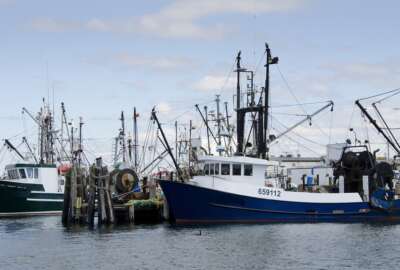

NOAA’s network modernization will also build additional resiliency into its communications, an essential capability for an agency that has seen near-record levels...
The National Oceanic and Atmospheric Administration is spending the next decade modernizing its networks, and has awarded AT&T more than a $300 million task order to support this effort.
Under this agreement, NOAA will move from a multi-vendor network environment to a single, next-generation communications platform. The agency serves as an environmental intelligence agency that provides daily weather forecasts and severe storm warnings. The agency also supports fisheries management, coastal restoration and marine commerce.
This modernization will overhaul NOAA’s IT capabilities at its headquarters and at the National Weather Service, the National Marine Fisheries Service, the National Ocean Service, Oceanic and Atmospheric Research, National Environmental Satellite, Data and Information Service and the Office of Marine and Aviation Operations.
Jeff Flick, the deputy director of NOAA’s Service Delivery Division, said in an interview that the AT&T award, delivered under the General Services Administration’s Enterprise Infrastructure Solutions contract vehicle, would provide the agency a huge range of capabilities, including satellite, wireline and 5G capabilities.
“One of the many challenges, as the legacy infrastructure ages, is we have some limitations in what those technologies can do. Adding new technologies enables opportunities for new sensors, it enables the opportunity to retire some expensive legacy infrastructure,” Flick said. “5G and those types of technologies will allow NOAA to potentially reevaluate the sensors that they’re using, and at some point in the future, look at what data they’re pulling through those sensors, and do they want more data.”
Chris Smith, the vice president for civilian and shared services at AT&T Public Sector and FirstNet, said in an interview that this network consolidation would reduce the risk of network outages and improve network and application availability.
“It’s been built up with a lot of legacy technologies and effort over time, so you, in many cases, end up with a network that has a lot of different moving parts within it, a lot of complexity,” Smith said. “I think what NOAA is looking for is somebody that is going to be able to help them on that journey to get off of those legacy technologies, ultimately into a fully meshed and robust virtual private network that takes advantage of today’s technologies, but is also leaning forward into those that are coming at us.”
NOAA’s network modernization will also build additional resiliency into its communications, an essential capability for an agency that has seen near-record levels of economic devastation brought on by natural disasters. At least 16 disasters this year have resulted in billion-dollar recoveries.
Flick said NOAA has a very resilient telecommunications infrastructure backed up by layers of resiliency within its applications, but improving its communications infrastructure would enhance its overall resiliency for NOAA to continue to provide local forecasts. The task order, he added, would also support NOAA’s wide array of manned and unmanned sensors deployed around the world.
“The additional bandwidth capability is a feature that can enable us to pull more data from our sensors, as well as in a secondary, tertiary backup scenario that allows additional data to be used, and not necessarily have to be prioritized. That’s just a resiliency feature, as well as a capability enhancement.
Flick said one of the advantages of awarding this task order under the next-generation EIS telecoms vehicle is that it allows the contract to grow with technology over time.
“That is going to be a very welcome feature because it’s hard to project technology and features out more than just a few years. It’ll be exciting to see what the industries produce, and yet they’ll still be available on this contract structure,” he said.
Smith said AT&T will work with NOAA to set goal benchmarks over the lifecycle of this 10-year modernization effort.
“Modernization is not a one-time journey, it’s a lifetime, if you will, for the organization,” he said. “It’s going to be critically important that NOAA and ourselves work together on what does that short, mid and long-term set of things that they want to get accomplished is, and that we clearly lay that out, because you always want to have quick wins in front of you to be happy to that momentum, to get better capabilities into the customers’ hands.”
Copyright © 2025 Federal News Network. All rights reserved. This website is not intended for users located within the European Economic Area.
Jory Heckman is a reporter at Federal News Network covering U.S. Postal Service, IRS, big data and technology issues.
Follow @jheckmanWFED

